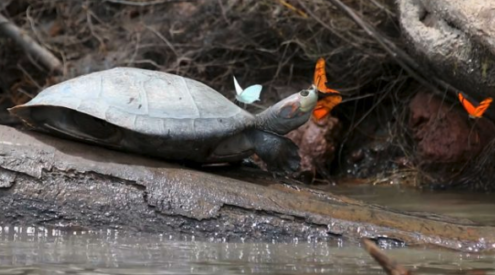Is your Christmas tree looking a bit lonely without the prettily wrapped presents underneath?
It’s out with the old and in with the new, but what is the most efficient and eco-friendly way to go about taking down your tree?

Image: Unsplash
For those of you who celebrated these holidays with your trusty ‘evergreen’ or fibre-optic Christmas tree, it’s just a matter of packing it up until next December.
Research shows that in the longterm, an artificial tree is only more eco-friendly if you’ve been using it for at least 10 years, so best keep it up.
Live trees are still the way to go then, but only if you dispose of them properly by chipping or burning.
‘Tis the season to be braai-ing, however, and you can get your fire going with a few of the pine needles and the wood of the tree – it’ll feel like you’re out in the forest.
Wood chipping is one way to dispose of your living tree that will essentially break the tree up into smaller wood chips or shavings.
According to BW Treefelling, a local company that handles tree-related maintenance, a wood chipper is used to turn the large pieces of wood (branches and bits of trunk) into smaller wood chips which can be easily disposed of.
Chippers are portable machines where branches and pieces of the trunk are inserted into the ‘hopper’ which feeds it to the chipping blades. The chipper’s quick processing results in wooden chips of the original larger piece, which is then ready for use.
Alternatively, a great pile of them serves as a great vantage point for aristocratic doggies too – this collie is on top of things:
These wood chips could be burned for fuel as well, but if your entire tree is fed through a wood chipper, then the leaves and other useful organic material can be salvaged. All of this material can be used as mulch for your garden and plants.
The mulch layer, made from your up-cycled wood chips, acts as a protective and nutritive layer atop your garden soil. Mulch is great for conserving water and keeping moisture in the soil so that it doesn’t evaporate and dry out in harsh conditions.
Pine needles decompose slowly and can be used for mulching too.
The natural decomposition process of the organic matter – last year’s Christmas tree – will provide nutrients for the soil and improve its structure – its denseness and porosity – according to Brands Tree Felling.
You may need some more trees, but this mulching business isn’t bad for some creative and thrifty landscaping either:
View this post on Instagram
This is one small way you can save money, water and give the earth a bit of a holiday as well.
This zoo in the Poconos in Pennsylvania actually requests donations of used live Christmas trees for the animals at the park:
Head Zookeeper Pamela Zoglino at the Claws ‘N’ Paws Wild Animal Park says the zoo has received about a dozen old tress so far, and animals have reacted positively to their new decorations and ‘toys’.
‘[…] it may be an old tree to you, but it’s a new tree to the animals,’ says Zoglino.
Featured image: Unsplash
You may also like










